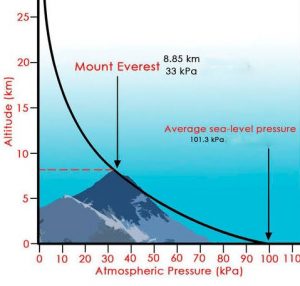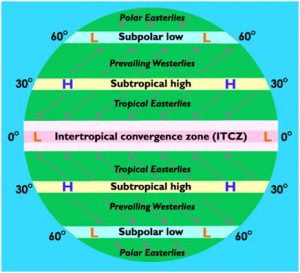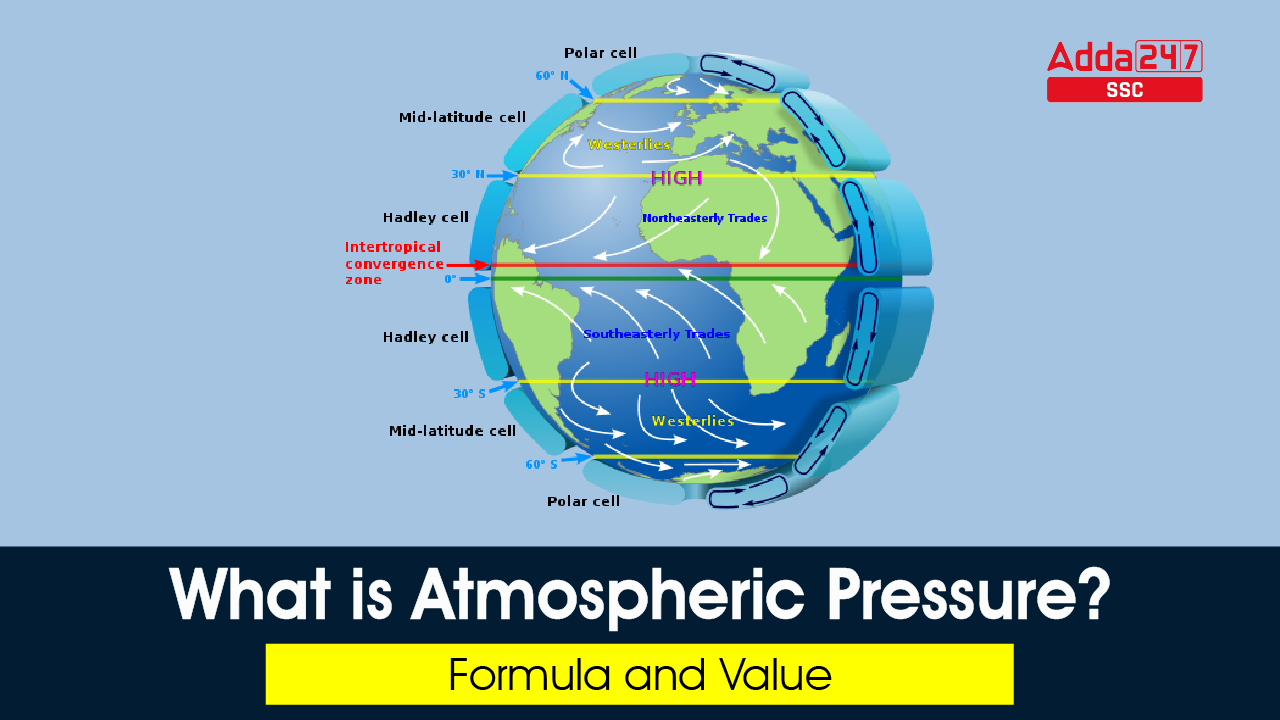What is Atmospheric Pressure?
The weight of a column of air contained in a unit area from the mean sea level to the top of the atmosphere is called atmospheric pressure. The atmospheric pressure is also defined as the force which acts normally on a unit area around any point, due to the column of atmosphere above that point. The atmospheric pressure is also known as Air Pressure. Read the article till end to have details about the Atmospheric Pressure.
Facts Related to Atmospheric Pressure
There are various important points which can be kept in mind about the Atmospheric Pressure. The following points are important that should be known about the Atmospheric Pressure:
- It is measured in force per unit area.
- Atmospheric Pressure is expressed in ‘millibar’ or mb. For application purposes, it is also measured in Kilo Pascal.
- Instruments used to measure Atmospheric Pressure :
The aneroid barometer or mercury barometer is the instrument used to measure Atmospheric pressure. - The rate of change of pressure in regard to distance is the pressure gradient.
Vertical Variation of Atmospheric Pressure
With the increase of altitude, the atmospheric pressure decreases. Above 5.5 km (18,000 feet), the air pressure becomes half of the sea level and at the height of Mount Everest (29,000 feet), the atmospheric pressure is only one third of the pressure at sea level. In the lower atmosphere, the pressure decreases rapidly with height. The decrease in pressure with altitude, however, is not constant. Since the factors controlling air density – temperature, amount of water vapor, and gravity are variable, there is no simple relationship between altitude and pressure. Check the graphic representation of relationship of altitude and atmospheric pressure.

Pressure Gradient
In general, the atmospheric pressure decreases on average at the rate of about 34 millibars every 300 meters of height. The vertical pressure gradient force is much larger than that of the horizontal pressure gradient. But, it is generally balanced by a nearly equal but opposite gravitational force. Hence, we do not experience strong upward winds. The low-pressure system is encircled by one or more isobars with the lowest pressure at the center.
Horizontal Distribution of Atmospheric Pressure
- The horizontal distribution of pressure is studied by drawing isobars at constant levels.
- Isobars are lines connecting places having equal pressure. In order to eliminate the effect of altitude on pressure, it is measured at any station after being reduced to sea level for purposes of comparison.
- There are distinctly identifiable zones of homogeneous horizontal pressure regimes or ‘pressure belts’. On the earth’s surface, there are in all seven pressure belts.
Pressure Belts
The are seven pressure belts which are explained below:
- Equatorial low-pressure belt: Lies between 10°N and 10°S latitudes.
This belt is the zone of convergence of trade winds from two hemispheres from sub-tropical high-pressure belts. This belt is also called the Doldrums. - Sub-tropical high-pressure belt: The sub-tropical highs extend from near the tropics from 10°N and S to about 35°N and S.
- Sub-polar low-pressure belt: It is located between 45°N and S latitudes and the Arctic and the Antarctic circles (66.5° N and S latitudes).
- Polar high-pressure belt: The polar highs are small in area and extend around the poles. They lie around poles between 80 – 90° N and S latitudes.
These pressure belts can be seen in the given globe:

Atmospheric Pressure Value
- 1 Atmospheric Pressure is equal to 1,013 millibars.
- Atmospheric Pressure in a bar: 1.01325 bar
- The atmosphere exerts a pressure of 1034 gm per square cm at sea level. This amount of pressure is exerted by the atmosphere at sea level on all animals, plants, rocks, etc.
- Near the equator the sea level pressure is low and the area is known as the equatorial low. Along 30° N and 30° S are found the high-pressure areas known as the subtropical highs. Further pole wards along 60° N and 60° S, the low-pressure belts are termed the subpolar lows. Near the poles the pressure is high and it is known as the polar high.
Atmospheric Pressure Formula
P = F/A = (m*g)/A, where A is surface area. Atmospheric pressure is thus proportional to the weight per unit area of the atmospheric mass above that location, Pressure (p), mass (m), and acceleration due to gravity (g).
| Check Other Posts | |
| Latitude and Longitude of India | Reflection of Light |




 Upcoming Government Exams, Complete Govt...
Upcoming Government Exams, Complete Govt...
 SSC Exam Calendar 2025–26 Out, Check All...
SSC Exam Calendar 2025–26 Out, Check All...
 RRB JE 2024 Notification, CBT 2 Exam Dat...
RRB JE 2024 Notification, CBT 2 Exam Dat...


